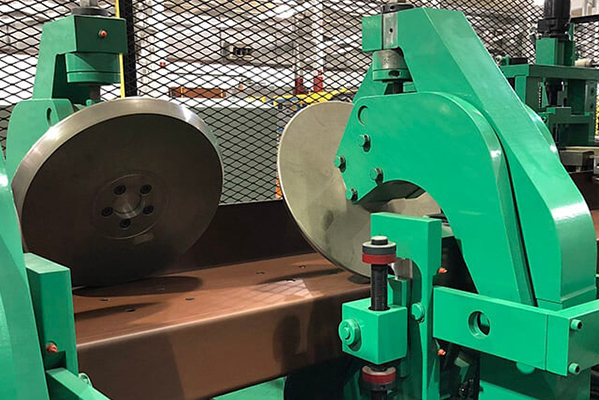Navigation Menu
Contact Us
- Email:
- info@wxavatar.com
- Address:
- Yurong Village, Yuqi Street, Huishan District, Wuxi, China.
Release Date:Feb 28, 2025 Visit:64 Source:Roll Forming Machine Factory
The Roll Forming Process: A Step-by-Step Overview
The roll forming process begins with a coil or sheet of metal, typically steel, aluminum, or other alloys. The material is fed into a series of roll stands, each equipped with rotating rolls that gradually shape the metal into the desired profile. These rolls are meticulously designed to ensure that the metal is bent incrementally, reducing stress and maintaining the material's structural integrity.
Material Feeding: The process starts with the unwinding of a metal coil, which is then fed into the roll forming machine. The metal strip is guided through the initial set of rolls, ensuring proper alignment and tension.
Incremental Bending: As the metal progresses through the machine, each set of rolls performs a specific bending operation. The gradual shaping minimizes the risk of material deformation and ensures a smooth, consistent profile. This step is the heart of the roll forming process, where the metal takes on its final shape.

Cutting to Length: Once the metal has been fully formed, it is cut to the required length. This can be done using a variety of methods, such as flying cutters or pre-cut blanks, depending on the application and production requirements.
Finishing Touches: Depending on the end use, the formed metal may undergo additional processes such as punching, embossing, or welding. These secondary operations enhance the functionality and aesthetics of the final product.
Advantages of Roll Forming
The roll forming process offers numerous advantages over traditional metal fabrication methods. Its ability to produce long lengths of complex profiles with tight tolerances makes it ideal for high-volume production. Additionally, roll forming minimizes material waste, as the process is highly efficient and precise. The consistency and repeatability of the process ensure that each piece meets the same high standards, making it a preferred choice for industries requiring uniformity and reliability.
Applications of Roll Forming
Roll forming is widely used in various industries due to its versatility and efficiency. In the construction sector, it is employed to produce roofing panels, wall cladding, and structural components. The automotive industry utilizes roll forming for manufacturing chassis parts, seat frames, and trim components. Other applications include HVAC systems, solar panel frames, and storage solutions.
Conclusion
In conclusion, the roll forming process is a cornerstone of modern metal fabrication, offering unparalleled precision, efficiency, and versatility. From its incremental bending stages to its wide-ranging applications, roll forming continues to shape the future of manufacturing. As industries evolve and demand for customized metal components grows, the roll forming process will remain a vital tool in meeting these challenges. Whether in construction, automotive, or beyond, roll forming stands as a testament to innovation and engineering excellence.